VietNamNet Bridge – The Khinh Dao communal house in the northern port city of Hai Phong not only preserves the unique architecture of the 18th century, but also the golden letter of the Nguyen dynasty.
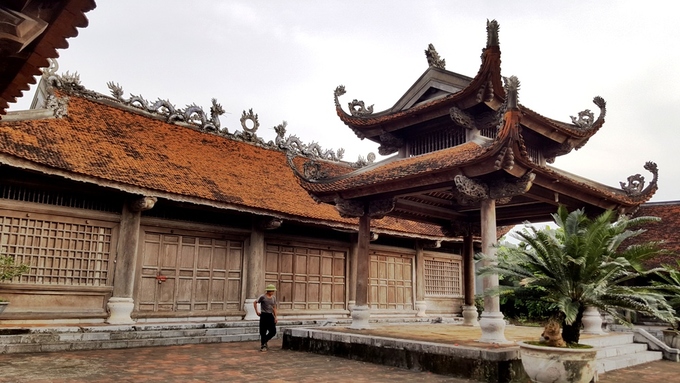
The Khinh Dao communal house is located in An Hung commune, An Duong district. It is a religious structure that preserves many architectural features in the post-Le dynasty of the 18th century. In 2005, this relic was honored by the state as a national historical and cultural relic site.
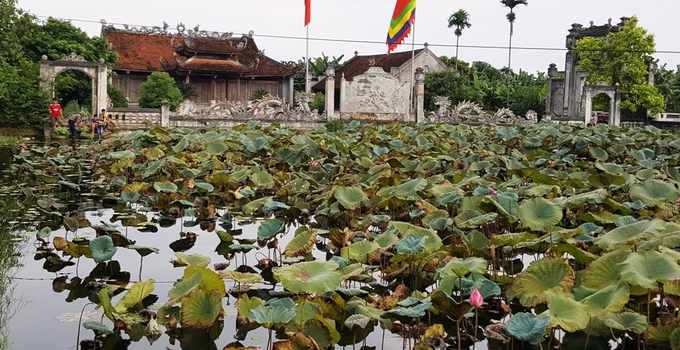
After more than 200 years, the communal house was heavily degraded and was recently restored at a cost of VND11 billion by the Ministry of Culture, the People’s Committee of Hai Phong.
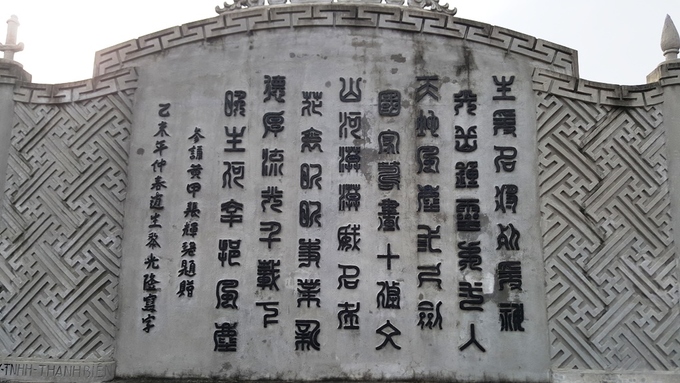
The gate of the communal house is decorated with a large screen, which is carved with a poems in old Chinese characters. After the village’s predecessors died, no one in the village can read and interpret the contents of the poem.

The communal house does not have a main gate with 4 or 2 columns standing independently as many other communal houses, but two gates on the right and the left with unique architectural style.
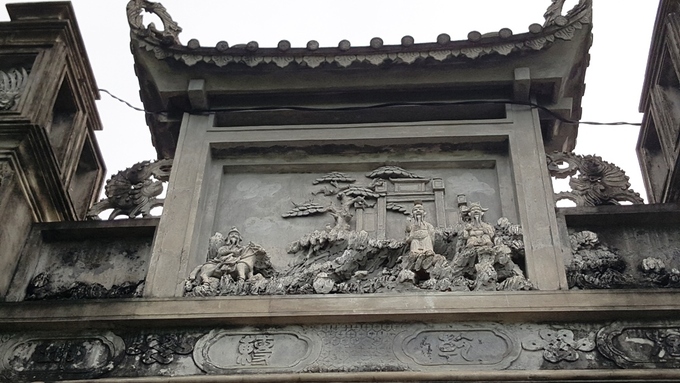
The roof of the gate is emblazoned with the statue of General Pham Dinh Trong in armor, riding a horse in the battlefield and watched by the gods standing on the mountain.
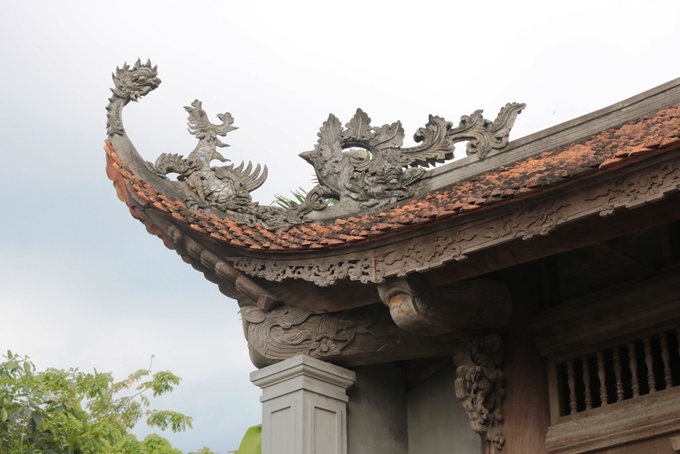
Khinh Dao communal house is built in the traditional style, with 5 front compartments and 3 compartment in the sanctuary. The roof is covered with curved tiles, decorated with the statues of two dragons playing with the sun.
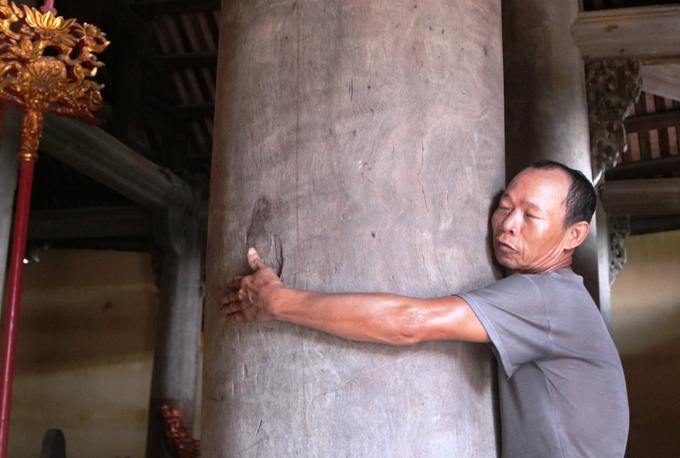
Mr. Vu Van Tho, 62, who is assigned by villagers to look after the communal house, said, the doors and frame of the communal house are made with ironwood. The communal house has 42 ironwood pillars on the rock, of which four pillars are about one meter in diameter, about 5 meters tall. The remaining pillars are 0.5 to 0.8 meters in diameter.
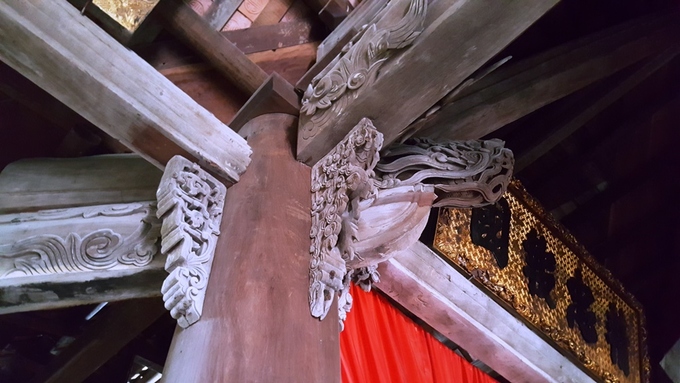
The system of rafters is well structured and carved.
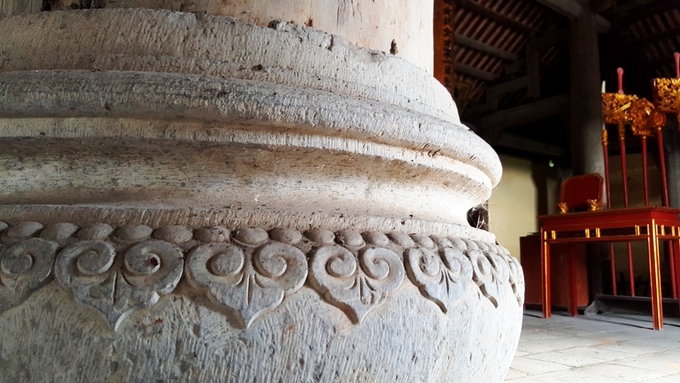
The monolithic rocks used as pedestals for wooden pillars are about 0.8 meters high and engraved with patterns.
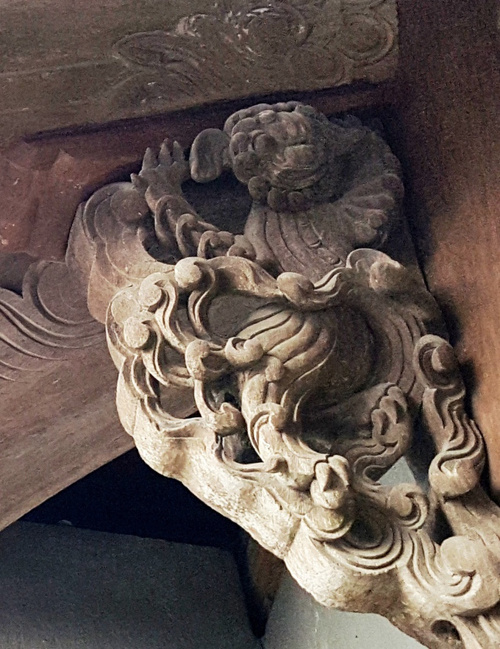
In addition to the image of the dragon, waves, flowers, leaves, and lion’s club is also carved on the roof of the communal house.
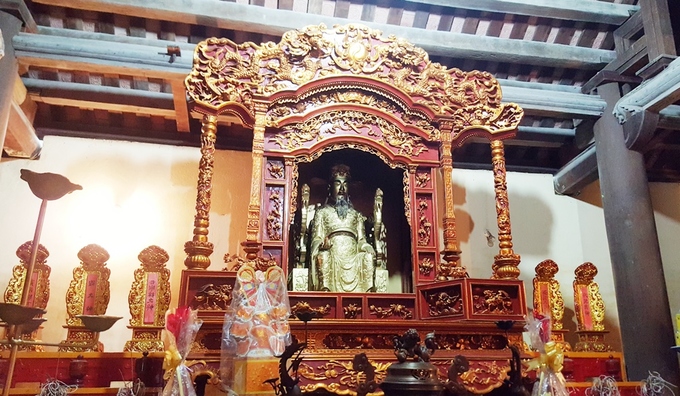
In the communal house, local people worship 6 deities of the Hung Vuong age and Pham Dinh Trong (1715-1754), a general in the Le Dynasty in the 18th century as the tutelary.
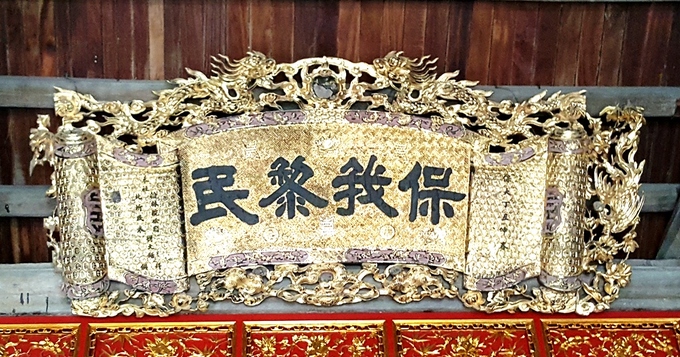
183 years after the death of Pham Dinh Trong, in 1937 King Bao Dai, the last king of the Nguyen Dynasty conferred the communal house of Khinh Dao village a great wooden board with four gild letters “Bao Nga Le Dan” (The god protecting people).
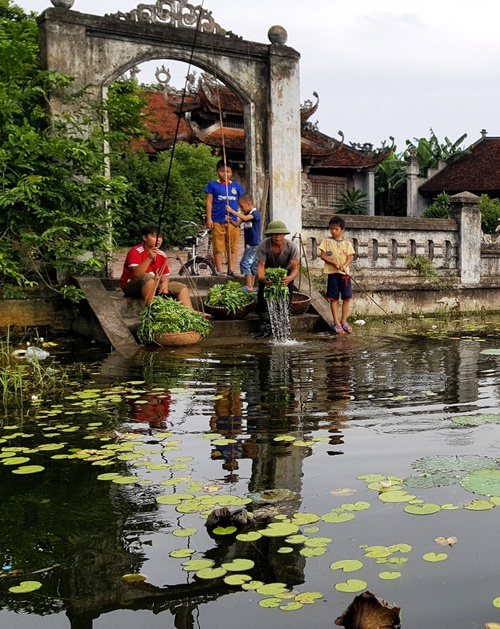
After many years of ups and downs, the communal house has now become the destination of many tourists and is the pride of the Khinh Dao people in particular and Hai Phong in general.
T. Van
Photo: VNE